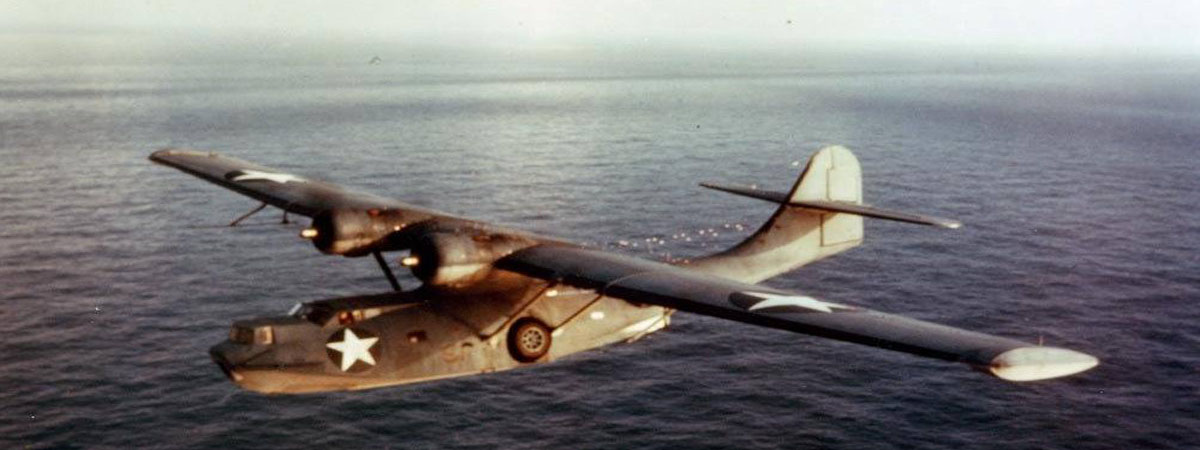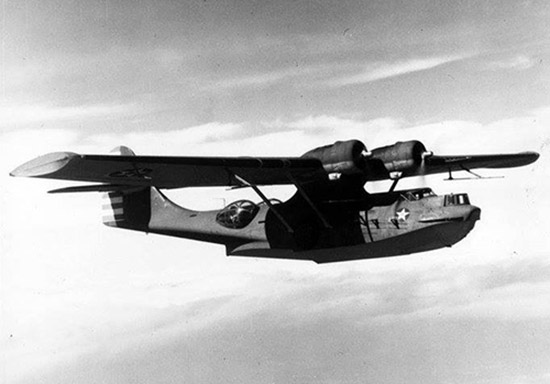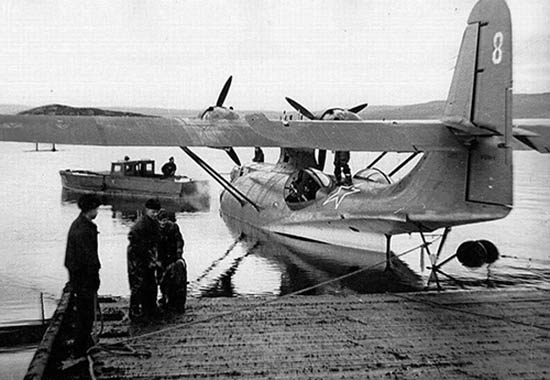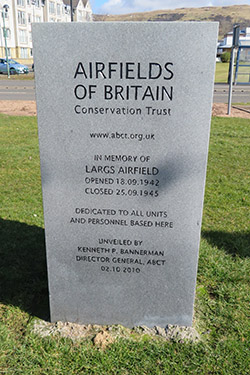
Largs and the WW2 Catalina Flying Boats
During World War 2 in 1942 Largs became an airport to American built Catalina Flying Boats.
The Catalina's part in the war effort was to patrol the Atlantic searching for German U-Boats. The Largs base served as an overflow for the larger Greenock Seaplane Base at The Battery Park and was a civilian facility operated by Scottish Aviation Ltd which was based at Prestwick. RAF personnel would serve on attachment to the seaplane base.
A concrete slip was built for them across from Barrfields Pavilion which is still in use today by the local Royal National Lifeboat Institute (RNLI).
During the war Barrfield Theatre became the base workshop and administration area with the putting greens at the front their staging post. Two other slips were built on Cumbrae for the aircraft as the base expanded and are still in use today as the Cumbrae slip used by CalMac and the other used by the Sportscotland National Centre.


From August 1943 twenty-seven twin engine Martin Mariner flying boats were delivered to Largs. Six on these were flown by No.524 Squadron, RAF from Oban, but they were not a success and were returned to the US in 1944. During the summers of 1944 and 1945 regular four-engine onsolidated PB2Y-3B Coronado flying-boat services carrying passengers and mail were flown by No.231 Squadron RAF from Montreal / Boucherville, via Gander Lake, terminating their transatlantic crossing at Largs.
West bound services were routed via Iceland for a re-fueling stop. Twenty-three return flights were made in 1944 and from May 1945 two return flights were made each week to the end of September for a total of 169 crossings.

The service finally ended in September 1945 when the squadron relocated to Bermuda. By the end of the war Largs had serviced more than 300 PBY Catalina's for the RAF.
In addition to using the waters off the base slipway flying boats were also moored on the opposite side of the Largs Channel.
Seaplanes occasionally sank at their moorings and there are a number of wrecks recorded in the area. In March 1946
at least four Coronado's were scuttled off the island of Little Cumbrae.
A sunken Catalina is still located in shallow waters near the Cumbrae CalMac ferry slip and is a popular diving wreck. Images of this wreck can be seen at the Canmore National History site.
On the 2nd of October 2010 a Memorial stone with inscription (pictured left) was erected by Kenneth Bannerman of the Airfields of Britain Conservation Trust to remember this important and long forgotten Airfield. Its located on the Prom infront of Barrfields.
More details of the Catalina Flying plane can be found on the Catalina Society Web Site.
Largs International Airport
It could be argued that Largs was an International Airport throughout the war with Calalina's leaving various locations in America and landing in the Largs Channel.
However Largs fully became an International Airport on the 11th July 1945 when Iceland Airways flew a Catalina from Reykjavik in Iceland to Largs with four crew and four passengers on board.
This was the first scheduled passenger fight to take place after the end of the war within all of Europe. The flight took six hours and was piloted by Johannes Snorrason.
Iceland Airways eventually became Icelandair. The 60 year anniversary of this event was celebrated with a ceremony at Glasgow airport and was attended by Sturla Bdvarsson the Icelandic transport minister at the time and Jon Karl Olafsson the airline's chief executive
